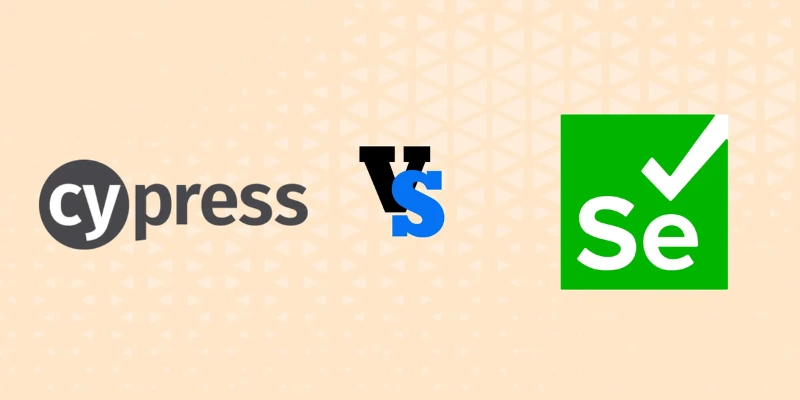Test automation is a rapidly developing field, and two tools dominate the conversation: Selenium and Cypress. Both are powerful, but they cater to different needs: Selenium for broad compatibility and flexibility, Cypress for speed and developer experience. If you’re looking to master Selenium, structured learning through Selenium Training in Pune can give you a strong foundation. But how do you decide which tool to invest your time in? Let’s break it down in detail.
Understanding the Core Differences
The first major distinction between Selenium vs Cypress lies in their architecture. Selenium, the veteran, relies on WebDriver to communicate with browsers externally, making it versatile but sometimes slower. Cypress, the modern contender, runs directly inside the browser, eliminating network latency and offering faster execution. This fundamental difference shapes everything from debugging to browser support. Another key factor is language compatibility. Selenium supports multiple languages (Java, Python, C#, Ruby), making it ideal for diverse teams. Cypress, however, is JavaScript-exclusive, which can be limiting for non-JS developers but perfect for frontend-heavy projects.
Speed and Performance: Which One Executes Faster?
When comparing Cypress vs Selenium, speed is a major differentiator. Cypress runs natively in the browser, executing commands almost instantly. There’s no WebDriver overhead, so tests complete faster, ideal for agile teams needing quick feedback. Selenium, while powerful, depends on external drivers, adding milliseconds (or more) to each command. However, Selenium’s strength lies in handling complex, large-scale test suites across multiple browsers. If your project requires cross-browser validation (including Safari or legacy browsers), Selenium remains the better choice. For improving efficiency and reliability, following these 7 Effective Tips for Selenium Test Automation can help teams get the most out of this versatile tool.
Debugging and Developer Experience
Debugging can make or break your automation workflow. Cypress excels here with built-in time-travel debugging, real-time reloads, and automatic waiting. You can pause tests, inspect elements, and even see snapshots of each step making troubleshooting effortless. Selenium, while flexible, requires additional tools (like logging frameworks or IDE plugins) for deep debugging. This setup can be cumbersome for beginners but offers more customization for advanced users. If you’re just starting, Selenium Training in Hyderabad can help bridge this learning curve with hands-on debugging techniques.
Browser and Language Support
One of the biggest Selenium vs Cypress battlegrounds is browser compatibility. Selenium supports all main browsers, including Chrome, Firefox, Safari, Edge, and even Internet Explorer. This makes it indispensable for enterprise applications requiring legacy support. Cypress, on the other hand, focuses on modern browsers (Chrome, Edge, Firefox). It lacks Safari support, which can be a dealbreaker for iOS testing. Similarly, Selenium’s multi-language support (Java, Python, etc.) makes it adaptable, whereas Cypress is strictly JavaScript-based.
When Should You Choose Selenium?
Selenium shines in scenarios demanding broad compatibility and scalability. If your project involves:
- Cross-browser testing (including Safari or IE)
- Multi-language teams (Java, Python, C#)
- Large-scale, distributed testing (Selenium Grid)
- Mobile testing (via Appium integration)
…then Selenium is the clear winner. Its maturity and flexibility make it a staple in enterprise environments.
Job Market and Career Prospects
Both tools offer strong career opportunities, but demand varies. Selenium skills are widely sought in enterprises, especially for roles requiring cross-browser or mobile testing. Cypress expertise is growing, particularly in front-end-heavy and DevOps-driven companies. For those aiming to specialize in Selenium, Selenium Training in Ahmedabad provides structured courses covering everything from basics to advanced automation strategies.
When Should You Choose Cypress?
Cypress is ideal for modern web apps and fast-paced teams. Choose it if you:
- Work with JavaScript/TypeScript (React, Angular, Vue)
- Need rapid test execution and real-time feedback
- Prefer built-in debugging over external tools
- Focus on Chromium-based browsers (Chrome, Edge)
Its developer-friendly design reduces flakiness and speeds up test writing perfect for startups and agile workflows.
Which One Should You Learn?
The Selenium vs Cypress debate boils down to your goals:
- Learn Selenium for versatility, cross-browser testing, and enterprise roles.
- Learn Cypress for speed, modern JS apps, and developer-centric workflows.
Both tools have their place in automation. If you’re serious about mastering Selenium, Selenium Training in Kolkata offers expert-led programs to fast-track your skills.
Also Check: Data-Driven Testing for Login Systems with Selenium
